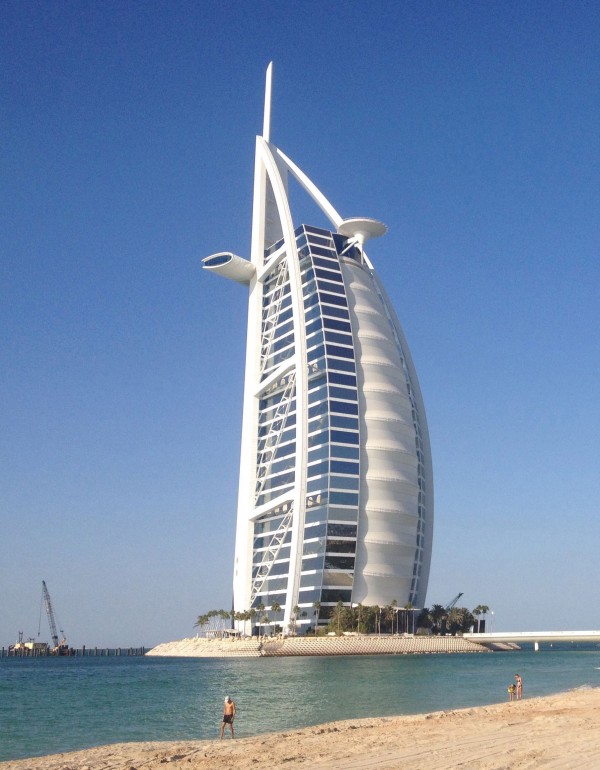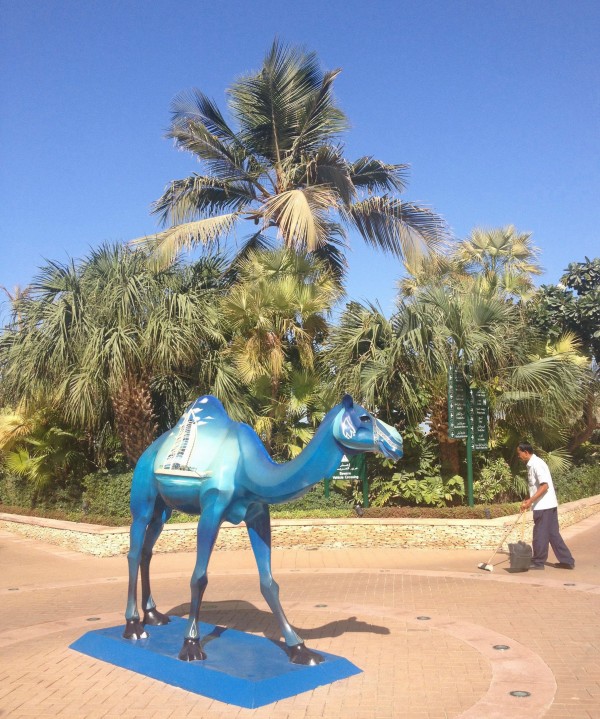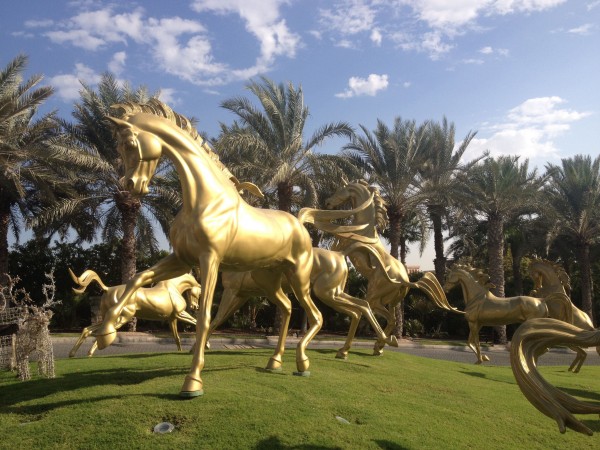Founded in 2004 the Dubai International Film Festival has grown in importance in the Middle East and become a world class event. This year, its 12th edition (December 9 to 16) honors legendary French actress Catherine Deneuve with a Lifetime Achievement award. It showcases critically acclaimed films of the current award season: Brooklyn with Soairse Ronan, Concussion with Will Smith, Spotlight with Michael Keaton, Suffragette with Carey Mulligan, Truth with Cate Blanchett and Robert Redford, Youth with Michael Caine, opening with Room and closing with The Big Short. But what makes this event significant is its financial support for emerging Arab filmmakers, not only in the UAE but in other countries like Egypt, Lebanon, Morocco, Tunisia, etc., and its Film Market that promotes film production in the region.
It is a spectacular sight to arrive in Dubai on an Emirates Airlines comfortable A380 plane, and see the tall skyscrapers of daring architectural designs dotting the landscape of this country that emerged from the desert in the last few decades to become a mecca of luxury shopping and international commerce. The most iconic buildings are Burj Al Arab (Tower of the Arabs) built in 1999, designed by architect Tom Wright in the shape of a sail, and Burj Khalifa built in 2009, the tallest building in the world at 2722 feet, named after the ruler of Abu Dhabi and president of the UAE.
Dubai sprang from the vision of Sheikh Rashid (1958-1990), son of the Emir, father of Sheikh Maktoum (1990-2006) and grandfather of the current Emir, Sheikh Mohammed. He dredged the Dubai Creek to enable larger ships to dock in the port and expand the gold trade, built an airport and roads. With the discovery of oil in 1966, the development of this country, that once subsisted on the pearl diving industry and the cultivation of the date palm, boomed exponentially. In 1971, when the British left what they used to call the “Pirate Coast”, Dubai and Abu Dhabi resolved their historical conflict to form the UAE, United Arab Emirates, with 5 other sheikhdoms.
It is precisely to learn about the history and culture of different countries by meeting foreign filmmakers and seeing their movies that I have been traveling to film festivals around the world ever since I was a film student at the University of Bologna, and I continue to do so as a film journalist based in Hollywood writing for American and International magazines. I was intrigued about Dubai because I wanted to witness with my own eyes this extremely quick transition from the Bedouin lifestyle of the Arabian peninsula to an ultra-modern city of the future. I knew that this fantasy paradise was built by immigrant workers paid low wages, but during my trip I had a chance to talk to many of them. They come from India, Pakistan, Nepal, Uzbekistan, the Philippines, and many other countries, they are granted a work visa, given food and lodging and paid around $500 a month to start. They are never allowed to become citizens and neither are their Dubai-born children; immigrant men cannot marry Dubai women, although Dubai men can marry immigrant women, but only after all the men in their family agree.
The UAE produced documentary A Tale About Water, Palm Trees and Family is about the traditional methods of growing and harvesting the date palm, which was made possible by an ancient irrigation system, and the custom of spending the hot summer months at the Al Ain Oasis. I noticed that back then the men wore the same outfit that many still wear today, a long white robe called Kandura or dishdash with a white headscarf (guthra) held in place by a black rope (Egal). The women wore a long black burqa called Abaya with a black headscarf (Shela), and over their forehead, nose and mouth they had a metal contraption that looked like an instrument of torture. Today you still see many women dressed in a similar manner in the modern Dubai shopping malls, except their face is covered by a black veil with a slit for the eyes, but more often only their hair and neck are covered by a black headscarf over the black robe.
To understand this religious obligation for Muslim women to cover up their bodies, hair and face, so as not to provoke men’s lust, I watched the UAE documentary The Tainted Veil about the Islamic hijab, that can be of different colors and patterns and be worn over western clothes.
I saw an amusing comedy set in Beirut, Halal Love, where a woman wants her husband to get a second wife, since Muslim men are allowed four wives, because she’s tired of his demand for nightly sex.
A woman director from Tunisia in her film As I Open My Eyes tells the story of an 18-year-old girl who sings protest songs in 2010, a few months before the Jasmine Revolution, and gets arrested by the police.
A French film, Fatima, is the true story of a Moroccan cleaning woman raising two teenager daughters in Lyon, who wrote about her life in the book “A Prayer to the Moon.”
A couple of curiosities. I saw colorful statues of camels popping up all over the grounds of the Jumeirah hotels that host the festival. They were painted by local artists in 2004. The camel was chosen because it’s a national symbol, like the falcon and the Arabian horse.
Before many of the festival films they showed a funny commercial from one of their sponsors, featuring Jennifer Aniston for Emirates Airlines.
Photographs by Elisa Leonelli (c) 2015




